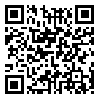2- Art University of Isfahan
At least two general systems of education can be identified in Iranian-Islamic architecture. One is the traditional teaching method of architecture which has centuries of precedent within which the transition of concepts was conducted through person to person and master-apprentice training; second, is the academic studying method in recent period, which is based on European schools’ pattern of education such as Paris School of Fine Arts. Architectural training has been a source of culture in our ancestor’s tradition and from an idealistic point of view it has been accompanied with morality and magnanimity; a factor which is mostly neglected in academic systems and as a result, the challenging permutation of original and authentic architecture has severely degraded to this imitative and superficial architecture. Teaching architecture is a very important factor in this permutation process. How a pattern for promotion of morality in training architecture can be provided?
To answer the mentioned question, this article aims to provide a model and idea to compile? Islamic moral and spiritual principles in teaching architecture and urban planning through introduction of the dominant moral and spiritual attributes in the advanced field of architecture derived from some written resources, such as magnanimity letters of buildings and architecture epistles,. These principles are based on the refinement and clarification, teacher student mutual respect, and the necessity of teaching professional attitude in architecture and other related fields. Its goal is not only to reveal some secrets of the field but also to light a path for all the students in fields of architecture and urban development.
Received: 2016/07/20 | Accepted: 2016/07/20 | ePublished: 2016/07/20
| Rights and permissions | |
 |
This work is licensed under a Creative Commons Attribution-NonCommercial 4.0 International License. |



